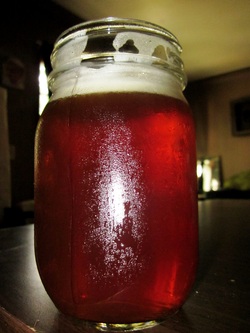
Time for some tasting notes from my second incarnation of the Redheaded Rye-child. Here is a link to the recipe in case you missed it but basically this is an American Amber Ale with a quarter Rye Malt and some dry hops.
http://inhousebrew.weebly.com/red-headed-rye-child.html
Aroma: Picking up a bit of the spicy, herbal notes that can come from Sterling hops but not really getting much of the Cascade right now. The malty sweetness is coming through as well.
Appearance: Looks pretty damn good for a red ale I think. Clarity came through after a week on tap in the freezer. Great head retention with all that Crystal. Color is pretty good and I'll admit I borrowed the idea of the C-120 in combination with Special B from an online forum. With most beers I wouldn't fret about color but when making a Red Ale I feel like it should be RED. Next time I think I'll try a full half pound of C-120 and Special B each to see if I can get a deeper red color.
Flavor: I think I've achieved a nice balance on this beer between the caramel sweetness of the C-120 and Special B and the dryer spiciness of the Rye Malt. While it starts off sweet it finishes mostly with the Rye flavor and the Sterling hops lingering. Still not much to be heard from the Cascade. Not bad, but next time I think I will drop the Sterling hops and stick strictly to a citrus based hop combination.
Mouthfeel: This beer has a nice full body resulting from the higher percentage of crystal malts and the high mashing temperature. Finishes well and goes down pretty easy.
Overall Impressions: Pretty much what an American Amber Ale with 27% Rye Malt and some dry hops should taste like. More full bodied than an APA but more heavily hopped than a traditional American Amber. It's getting there.
Next Time: This beer falls into the weird specialty category working off a American Amber Base per the BJCP and the questions for next time mostly revolve around whether or not I should keep it there or up the hops and gravity and just turn it into more of a Red Rye IPA. I feel like I have a decent start on this beer after two trys and think a Red Rye IPA could be a completely different beer (that I will need to make) but I'll stick with what I have going on this one. I know I like the combo of the C-120 and Special B and will try upping those as previously stated to achieve a more reddish tone. The rye is good, but I might even up it a little bit further. The hops I like but think that a more citrus based hop combination with more backloaded toward the end of the boil will improve the recipe. As for everything else I think it stays as is so until next time, bottoms up!
http://inhousebrew.weebly.com/red-headed-rye-child.html
Aroma: Picking up a bit of the spicy, herbal notes that can come from Sterling hops but not really getting much of the Cascade right now. The malty sweetness is coming through as well.
Appearance: Looks pretty damn good for a red ale I think. Clarity came through after a week on tap in the freezer. Great head retention with all that Crystal. Color is pretty good and I'll admit I borrowed the idea of the C-120 in combination with Special B from an online forum. With most beers I wouldn't fret about color but when making a Red Ale I feel like it should be RED. Next time I think I'll try a full half pound of C-120 and Special B each to see if I can get a deeper red color.
Flavor: I think I've achieved a nice balance on this beer between the caramel sweetness of the C-120 and Special B and the dryer spiciness of the Rye Malt. While it starts off sweet it finishes mostly with the Rye flavor and the Sterling hops lingering. Still not much to be heard from the Cascade. Not bad, but next time I think I will drop the Sterling hops and stick strictly to a citrus based hop combination.
Mouthfeel: This beer has a nice full body resulting from the higher percentage of crystal malts and the high mashing temperature. Finishes well and goes down pretty easy.
Overall Impressions: Pretty much what an American Amber Ale with 27% Rye Malt and some dry hops should taste like. More full bodied than an APA but more heavily hopped than a traditional American Amber. It's getting there.
Next Time: This beer falls into the weird specialty category working off a American Amber Base per the BJCP and the questions for next time mostly revolve around whether or not I should keep it there or up the hops and gravity and just turn it into more of a Red Rye IPA. I feel like I have a decent start on this beer after two trys and think a Red Rye IPA could be a completely different beer (that I will need to make) but I'll stick with what I have going on this one. I know I like the combo of the C-120 and Special B and will try upping those as previously stated to achieve a more reddish tone. The rye is good, but I might even up it a little bit further. The hops I like but think that a more citrus based hop combination with more backloaded toward the end of the boil will improve the recipe. As for everything else I think it stays as is so until next time, bottoms up!
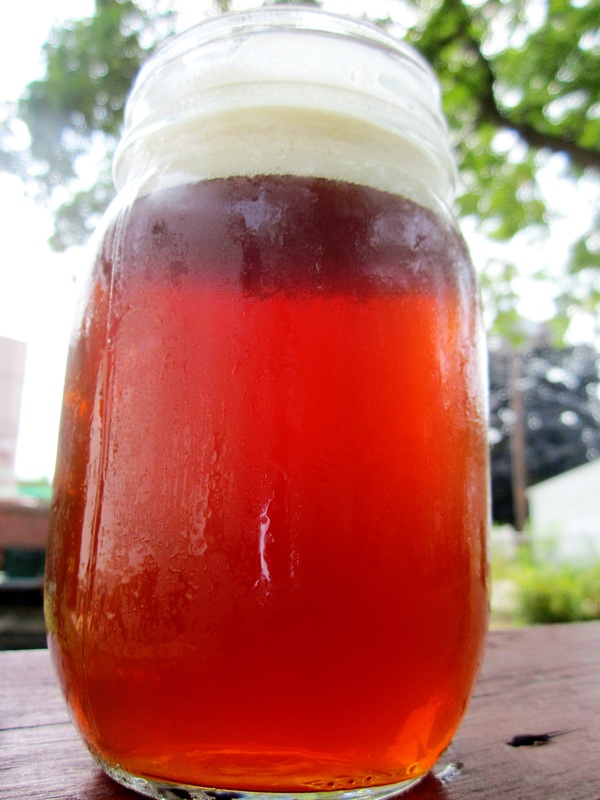

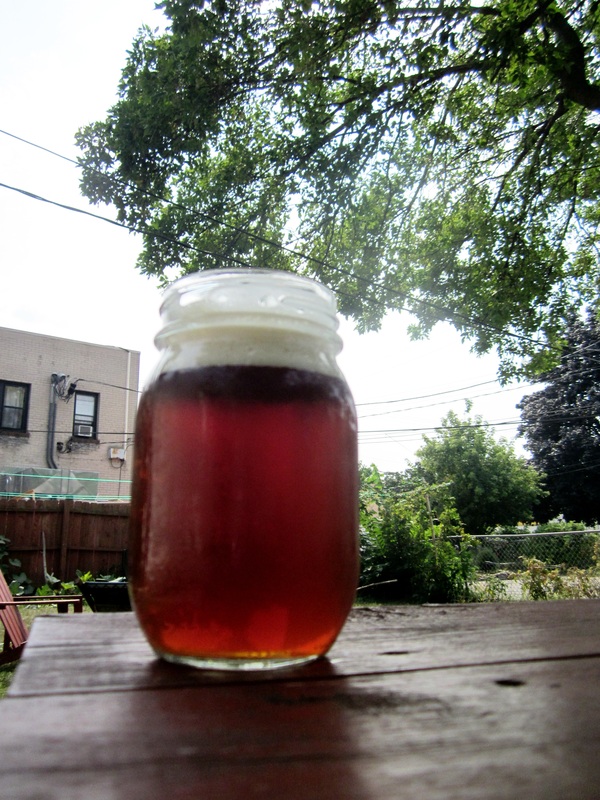
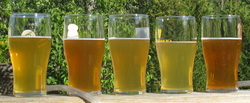
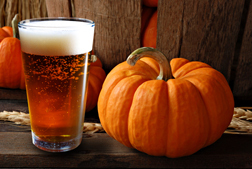
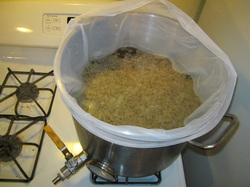

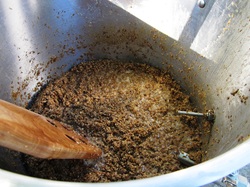

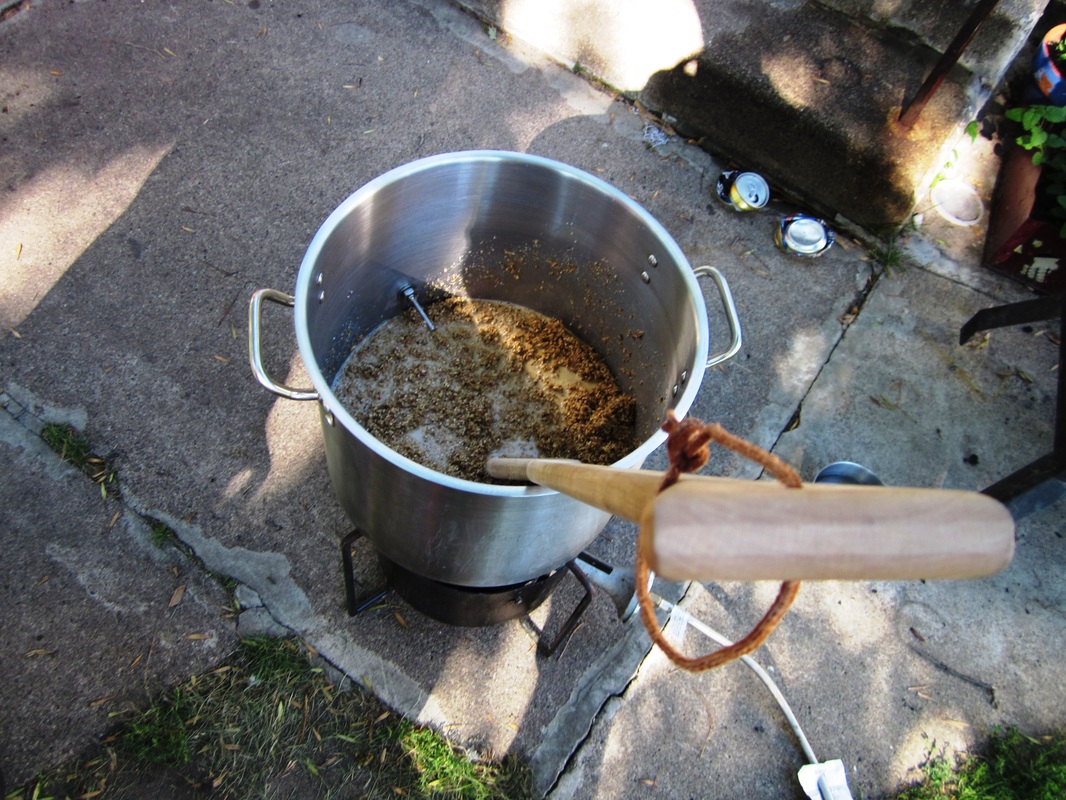
 RSS Feed
RSS Feed